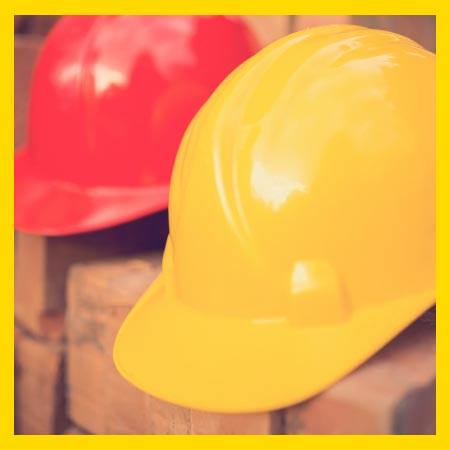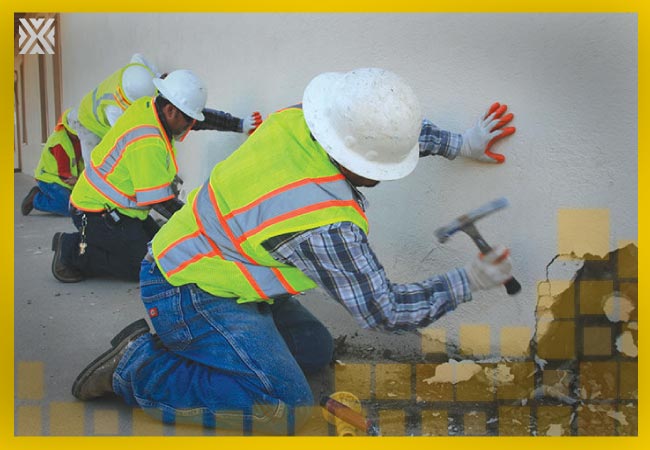Currency
January 10, 2023

Keeping an eye out for hazards that could lead to a blow to the head – and safeguarding against them – is vital in the workplace.
It’s also required: OSHA has standards focused on head protection: OSHA 1910.135(a) and 1926.100(a).
“It’s an absolute must in most hazardous environments,” said David Consider, senior workplace safety consultant at the National Safety Council, “the infamous ones being construction and mining.”
Deaths linked to traumatic brain injury more commonly occur in construction – NIOSH data shows that a quarter of all fatalities in the industry from 2003 to 2010 were the result of a TBI. But the risk for head injuries also is present in numerous other occupational sectors.

So, how can safety pros help protect workers?
“You can see some head injuries, such as cuts, burns and bruises,” says CPWR – The Center for Construction Research and Training. “But you cannot see a brain injury. These injuries happen when you are hit so hard that your brain bounces and twists inside your head.”
Head protection is available to help prevent external and internal injuries. ANSI/ISEA Z89.1, which had its most recent revision in 2019, is a consensus standard on head protection. OSHA most recently adopted the 2009 version of Z89.1 during its latest revision to the agency head protection rule, in 2012. Z89.1 rates head protection by type and class:
TYPE 1reduces the force of impact only from blows to the top of the head.
TYPE 2 reduces the force of impact from blows to both the top and the sides of the head.
CLASS G reduces danger from exposure to low-voltage electrical conductors of up to 2,200 volts.
CLASS E reduces danger from exposure to high-voltage electrical conductors of up to 20,000 volts.
CLASS C doesn’t protect from electrical conductors.
Assess your organization’s need for head protection and what type is appropriate. “Look at your job hazards, first and foremost,” said Stacey Simmons, national account manager at Bullard and chair of the International Safety Equipment Association head protection product group overseeing standard updates.
Workers in food processing or auto repair, for example, should consider a bump cap, as they’re more likely to experience bumps and scrapes than blows to the head. “For those organizations that really want to be proactive,” Consider said, “if they’re looking at their incidents and they do see that they have a high frequency of minor head injuries or head bumps or lacerations, head protection and hard hats might not be required, but that might be your sign that maybe a bump cap would help alleviate some of that.”
Because bump caps don’t meet ANSI Type 1 or Type 2 head protection requirements for reducing the force of impact from blows to the top and the sides of the head, they’re not appropriate for construction projects or other more hazardous work.
Seth Randall, regional safety director at Clark Construction, stresses the prevalence of TBIs in construction.
“The idea of head protection is for falling objects, that’s what we have to get away from, right? Because when you’re on the roof, there’s nothing, really, that can fall from the sky besides rain, right? So it’s, ‘Oh, I don’t need head protection because there’s nothing falling from the top.’ But now it’s, ‘Well, what about you falling from the roof?’
“If you fall, yes, you want your fall protection, your personal arrest assistant to catch you, but what’s protecting your head? And so that’s ideally where we want to go. It’s not the choice of when to wear it, it’s a why to wear it type of thing.”
It’s also required: OSHA has standards focused on head protection: OSHA 1910.135(a) and 1926.100(a).
“It’s an absolute must in most hazardous environments,” said David Consider, senior workplace safety consultant at the National Safety Council, “the infamous ones being construction and mining.”
Deaths linked to traumatic brain injury more commonly occur in construction – NIOSH data shows that a quarter of all fatalities in the industry from 2003 to 2010 were the result of a TBI. But the risk for head injuries also is present in numerous other occupational sectors.

So, how can safety pros help protect workers?
Types of protection
“You can see some head injuries, such as cuts, burns and bruises,” says CPWR – The Center for Construction Research and Training. “But you cannot see a brain injury. These injuries happen when you are hit so hard that your brain bounces and twists inside your head.”
Head protection is available to help prevent external and internal injuries. ANSI/ISEA Z89.1, which had its most recent revision in 2019, is a consensus standard on head protection. OSHA most recently adopted the 2009 version of Z89.1 during its latest revision to the agency head protection rule, in 2012. Z89.1 rates head protection by type and class:
TYPE 1reduces the force of impact only from blows to the top of the head.
TYPE 2 reduces the force of impact from blows to both the top and the sides of the head.
CLASS G reduces danger from exposure to low-voltage electrical conductors of up to 2,200 volts.
CLASS E reduces danger from exposure to high-voltage electrical conductors of up to 20,000 volts.
CLASS C doesn’t protect from electrical conductors.
Assess your organization’s need for head protection and what type is appropriate. “Look at your job hazards, first and foremost,” said Stacey Simmons, national account manager at Bullard and chair of the International Safety Equipment Association head protection product group overseeing standard updates.
Workers in food processing or auto repair, for example, should consider a bump cap, as they’re more likely to experience bumps and scrapes than blows to the head. “For those organizations that really want to be proactive,” Consider said, “if they’re looking at their incidents and they do see that they have a high frequency of minor head injuries or head bumps or lacerations, head protection and hard hats might not be required, but that might be your sign that maybe a bump cap would help alleviate some of that.”
Because bump caps don’t meet ANSI Type 1 or Type 2 head protection requirements for reducing the force of impact from blows to the top and the sides of the head, they’re not appropriate for construction projects or other more hazardous work.
Seth Randall, regional safety director at Clark Construction, stresses the prevalence of TBIs in construction.
“The idea of head protection is for falling objects, that’s what we have to get away from, right? Because when you’re on the roof, there’s nothing, really, that can fall from the sky besides rain, right? So it’s, ‘Oh, I don’t need head protection because there’s nothing falling from the top.’ But now it’s, ‘Well, what about you falling from the roof?’
“If you fall, yes, you want your fall protection, your personal arrest assistant to catch you, but what’s protecting your head? And so that’s ideally where we want to go. It’s not the choice of when to wear it, it’s a why to wear it type of thing.”









